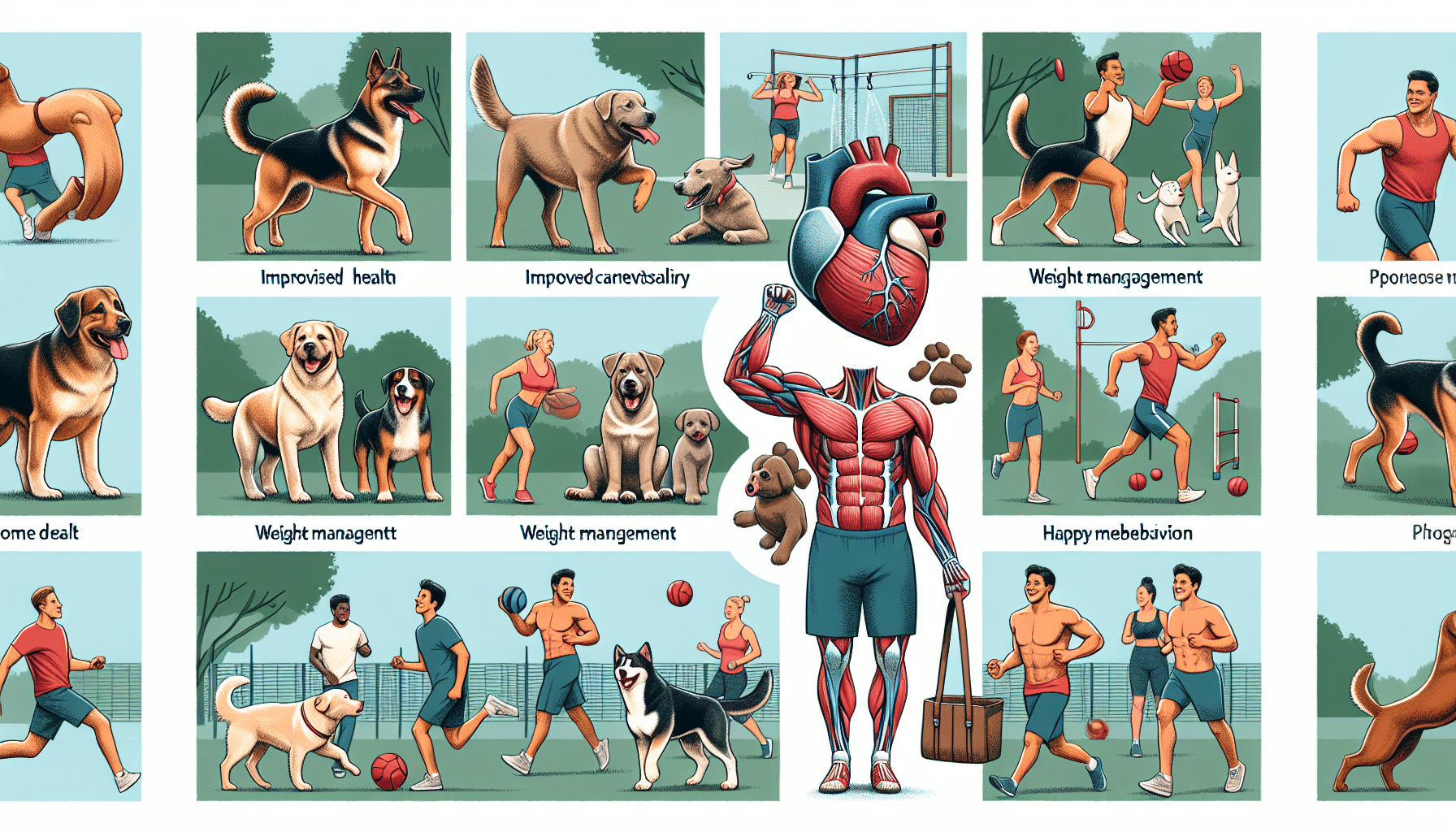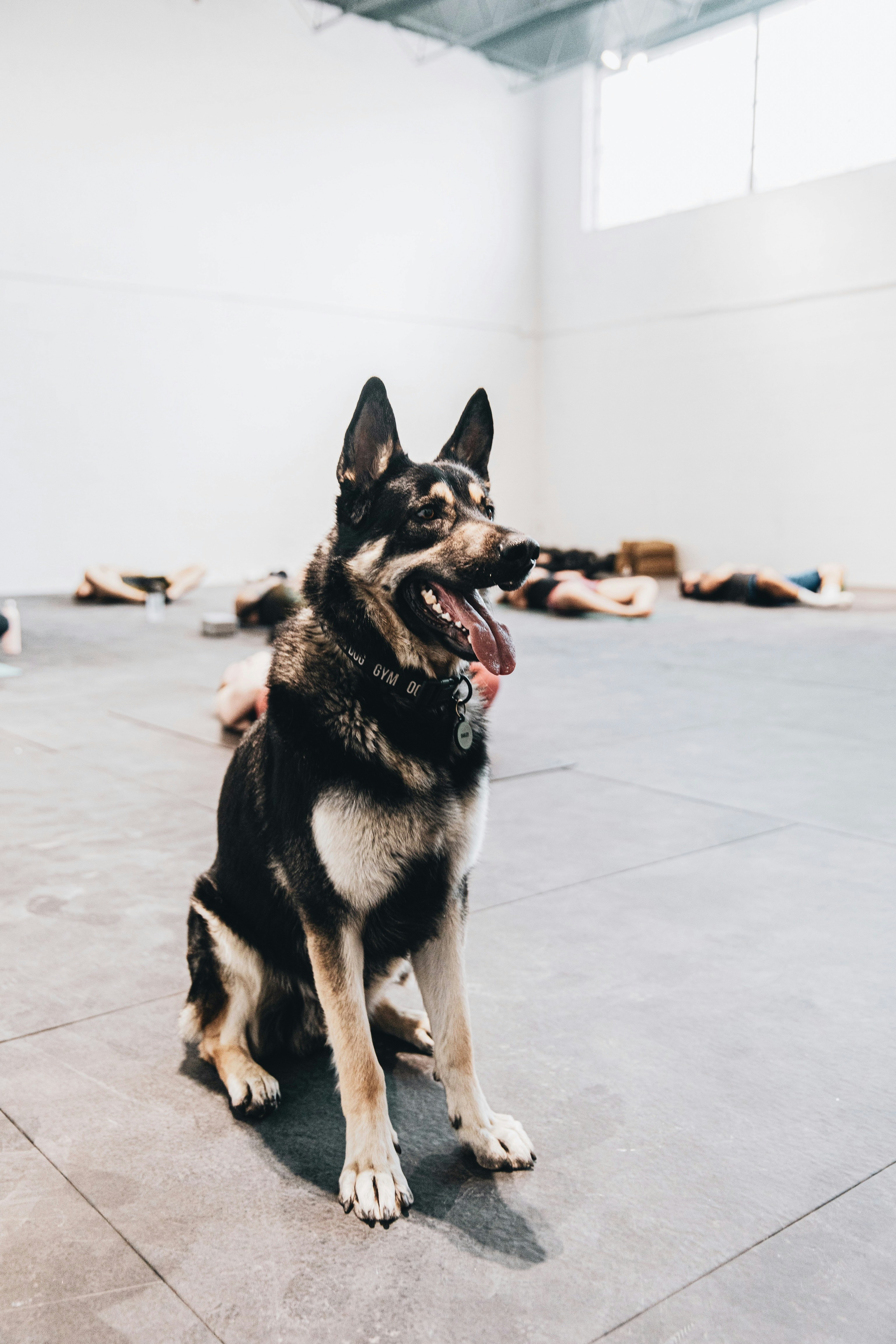Did you know that regular exercise is just as important for your furry friend as it is for you? When it comes to keeping your dog healthy and happy, physical activity plays a vital role. It not only helps them maintain a healthy weight, but also provides numerous benefits for their overall well-being. From increased mental stimulation to improved behavior, exercise is an essential aspect of your dog's life. In this article, we will explore the importance of exercise for your dog and the many ways it can positively impact their health and happiness. So, let's embark on this journey together and discover how you can give your canine companion the exercise they need to thrive!

This image is property of images.unsplash.com.
The Importance of Exercise for Your Dog
Regular exercise is essential for maintaining the overall health and well-being of your cherished furry friend. Just like humans, dogs require physical activity to stay fit, maintain a healthy weight, and prevent a myriad of health issues. But exercise goes beyond just physical health benefits; it also plays a crucial role in your dog's mental well-being, behavior management, socialization, and bonding with you. In this article, we will explore the comprehensive benefits of exercise for your dog and provide you with some creative ways to incorporate exercise into their daily routine.
1. Physical Health Benefits
1.1 Weight Management
Obesity is a prevalent issue among dogs today, and it can lead to a myriad of health problems, including joint pain, diabetes, and heart disease. Regular exercise, such as brisk walks or jogging, helps to burn calories and maintain a healthy weight for your furry companion. Keeping their weight in check promotes better overall health and reduces the risk of developing serious health complications in the future.
1.2 Cardiovascular Health
Similar to humans, dogs also benefit from cardiovascular exercise. Engaging in activities that get their heart pumping, like running or playing fetch, improves blood circulation and strengthens the heart. A healthy cardiovascular system contributes to better endurance and overall vitality for your furry friend.
1.3 Muscle Development
Regular exercise stimulates muscle growth and strength in dogs. Activities such as hiking, agility training, or swimming work various muscle groups, promoting a healthier and more muscular physique for your canine companion. Well-developed muscles provide support for their joints, protecting them from injury and promoting overall physical stability.
1.4 Improved Digestion
Exercise can also have a positive impact on your dog's digestive system. Engaging in moderate physical activity, such as going for walks or playing fetch, helps stimulate their metabolism, aiding in better digestion and preventing gastrointestinal issues. Regular exercise can alleviate problems like constipation and improve the overall efficiency of the digestive process.
This image is property of images.unsplash.com.
2. Mental Health Benefits
2.1 Stress Relief
Just like humans, dogs can experience stress and anxiety. Regular exercise provides an effective outlet for them to release pent-up energy and reduce stress levels. Physical activity triggers the release of endorphins, the feel-good hormones, which can help your dog feel more relaxed and content.
2.2 Stimulation and Enrichment
Exercise is not only beneficial for your dog's body but also for their mind. Engaging in mentally stimulating activities, such as puzzle toys, interactive play, or agility training, keeps their brains active and challenged. Mental stimulation is important for preventing boredom, which can lead to destructive behavior or anxiety-related issues.
2.3 Reduced Behavioral Problems
Regular exercise plays a crucial role in preventing and managing behavioral problems in dogs. When dogs don't get enough physical activity, they may become restless, hyperactive, or exhibit destructive behaviors. By incorporating regular exercise into their routine, you can help channel their energy in a positive direction, reducing unwanted behaviors and promoting better focus.
3. Socialization Opportunities
3.1 Interaction with Other Dogs
Exercise provides valuable opportunities for your dog to socialize and interact with other dogs. Off-leash dog parks or organized playdates allow them to engage in healthy social behaviors, learning vital communication skills and building confidence. Socialization is crucial for proper canine development and can help prevent behavioral issues that may arise from a lack of social interaction.
3.2 Positive Human Interaction
Regular exercise also creates opportunities for positive human interaction. Whether you're taking your dog for a walk or engaging in interactive play, these activities strengthen the bond between you and your furry friend. Spending quality time together through exercise helps build trust, enhances your relationship, and fosters a sense of companionship.
This image is property of images.unsplash.com.
4. Prevention of Common Health Issues
4.1 Obesity
Obesity is a significant concern in dogs, leading to various health problems. Regular exercise, combined with a balanced diet, can help prevent obesity by burning excess calories and maintaining a healthy weight. Preventing obesity in your dog promotes better overall health and reduces the risk of developing conditions such as diabetes, joint issues, and heart disease.
4.2 Joint and Bone Problems
Exercise plays a vital role in maintaining healthy joints and bones for your dog. Activities like walking, swimming, and moderate running help keep their joints mobile, reducing the risk of arthritis and other degenerative joint diseases. Additionally, exercise helps to strengthen their bones, preventing conditions like osteoporosis and promoting overall skeletal health.
4.3 Heart Disease
Regular exercise contributes to a healthy cardiovascular system, reducing the risk of heart disease in dogs. Engaging in activities that get their heart rate up, such as running or swimming, helps improve blood circulation and strengthens their heart muscles. A healthy heart enhances their overall endurance and lowers the chances of developing serious heart conditions.
4.4 Digestive Disorders
Exercise has a positive impact on your dog's digestive system. Physical activity helps stimulate their metabolism, promoting better digestion and preventing gastrointestinal issues such as constipation or bloating. By incorporating regular exercise into their routine, you can assist in maintaining a healthy digestive system for your furry friend.
5. Improved Training and Obedience
5.1 Increased Focus and Attention
Regular exercise is instrumental in improving your dog's focus and attention during training sessions. Physical activity helps to release excess energy, enabling them to concentrate better on learning commands and following instructions. Dogs who engage in regular exercise are generally more attentive and responsive, making training sessions more effective and enjoyable for both of you.
5.2 Better Control and Communication
Exercise plays a crucial role in enhancing your control and communication with your dog. When your furry friend is physically fit, they are more manageable on walks, in public spaces, and around distractions. Their improved physical condition allows you to have better control over their movements and behavior, strengthening the bond and trust between you.

6. Energy Release and Behavior Management
6.1 Reduction of Excessive Energy
Dogs have varying energy levels, and some breeds are naturally more energetic than others. Regular exercise provides an outlet for them to release their energy in a healthy and controlled manner. By engaging in activities that challenge them physically, such as running or playing fetch, you help prevent excessive energy buildup, which can lead to destructive behavior or hyperactivity.
6.2 Alleviation of Destructive Behavior
Exercise is an effective tool for managing destructive behavior in dogs. Providing them with an appropriate outlet for their energy and mental stimulation helps prevent boredom, which is often the root cause of destructive behaviors like chewing furniture or excessive barking. Regular exercise can alleviate these behaviors, promoting a more balanced and well-behaved canine companion.
7. Increased Bonding and Relationship
7.1 Quality Time Together
Exercise presents an excellent opportunity to spend quality time with your dog. Whether you're going for a walk, playing fetch, or engaging in dog-friendly activities, this time together strengthens the bond between you and your furry friend. Regular exercise sessions provide a chance for you to connect, have fun, and enjoy each other's company.
7.2 Trust Building
Regular exercise plays a crucial role in building trust between you and your dog. When you consistently provide them with opportunities for physical activity and take care of their exercise needs, they come to trust you as their responsible and attentive caregiver. This trust forms the foundation of a strong and mutually beneficial relationship.
8. Longevity and Overall Well-being
8.1 Increased Lifespan
The combination of physical and mental benefits derived from regular exercise contributes to increased longevity in dogs. By preventing obesity, promoting a strong cardiovascular system, maintaining healthy joints, and reducing the risk of various health issues, regular exercise can help extend your furry friend's lifespan, allowing you to enjoy their companionship for years to come.
8.2 Enhanced Quality of Life
Regular exercise significantly enhances your dog's overall quality of life. A fit and healthy dog experiences less discomfort, greater mobility, and improved vitality. Engaging in regular physical activity and mental stimulation promotes a positive outlook and a happier disposition, which translates into a higher quality of life for your beloved companion.
10. Ways to Incorporate Exercise into Your Dog's Routine
10.1 Regular Walks and Jogs
One of the simplest and most accessible forms of exercise for your dog is going for regular walks or jogs. Set aside time each day to take your furry friend for a leisurely stroll around the neighborhood or a brisk jog in the park. Walking and jogging not only provide physical exercise but also mental stimulation and an opportunity to explore their surroundings.
10.2 Engaging in Interactive Play
Playing with your dog is not only fun but also an excellent way to provide them with exercise. Play fetch, tug-of-war, or hide-and-seek to get them moving and engaged. Interactive play sessions stimulate their minds and bodies, keeping them physically fit and mentally stimulated. Incorporate toys, such as balls or frisbees, for added fun and variety.
10.3 Agility Training
Agility training is an exciting and challenging way to exercise your dog. Set up an agility course in your backyard or find a local dog agility class. This activity involves navigating your dog through tunnels, obstacles, and jumps, promoting physical coordination, mental agility, and enhanced focus. Agility training is an excellent option for high-energy dogs and can be a great bonding activity for you both.
10.4 Swimming
Swimming is a low-impact exercise that provides numerous benefits for your dog. Find a dog-friendly swimming spot, such as a beach or a pool, and let your furry friend enjoy a refreshing swim. Swimming engages multiple muscle groups, improves cardiovascular health, and provides a joint-friendly exercise option, especially for dogs with arthritis or joint issues.
10.5 Dog Sports and Activities
Explore dog sports and activities that cater to your dog's breed and energy level. Sports such as flyball, dock diving, or agility competitions provide intense physical exercise and mental stimulation. Engaging in these activities not only helps keep your dog in shape but also offers opportunities for socialization and friendly competition.
10.6 Dog-Friendly Hiking or Biking
If you enjoy outdoor adventures, hiking or biking with your dog can be a fantastic exercise option. Choose dog-friendly trails or paths and embark on a nature-filled journey together. Hiking and biking provide excellent cardio workouts for both you and your furry companion while allowing them to explore new sights and smells.
10.7 Fetch and Frisbee Sessions
The classic game of fetch or frisbee is a timeless exercise activity for dogs. Find a spacious area, like a park or your backyard, and throw a ball or frisbee for your dog to retrieve. This activity engages their muscles, improves their agility, and provides an outlet for their energy. Plus, it's a great way to bond and have fun together.
10.8 Interactive Puzzle Toys
For mental stimulation and exercise all in one, consider incorporating interactive puzzle toys into your dog's routine. These toys challenge your dog's problem-solving skills while rewarding them with treats or kibble. Not only does this provide mental stimulation, but it can also help slow down fast eaters and aid in weight management.
In conclusion, regular exercise is vital for your dog's physical, mental, and emotional well-being. By incorporating exercise into their daily routine, you can ensure they lead a healthy, happy, and fulfilling life. From preventing health issues to enhancing their training and behavior, exercise plays a crucial role in your dog's overall quality of life. So, lace up your shoes, grab a leash or a toy, and embark on an exercise journey with your furry friend. Your dog will thank you for it with endless tail wags, unconditional love, and a longer, happier life by your side.



